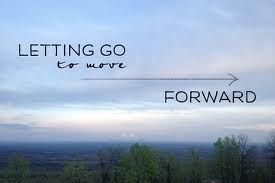I recently began taking yoga again and in being away from it for a little while, I have come to realize how important it is to be in that space of peace and calm. Interestingly, what I thought were relaxing exercises are more physically demanding yet at the same time it allows me to open my mind and body to places I don’t normally go. Yoga is a great analogy for life and as a result of my learning, I’d like to share some tips for helping you let go.
When I went to my yoga class, the first thing you do is lie down on the floor and breathe. I’m not sure about you but I don’t find lying on a hard floor incredibly comfortable so what I noticed right off the bat is how uncomfortable this is. However, not wanting to disturb the class, I lied down, closed my eyes and started to breathe. Focusing on your breath helps to keep your thoughts from wandering and also allows you to release whatever thoughts and feelings you are still carrying with you from your day. Without judgement, you can simply notice how your body feels and where in your body you may still be holding onto the stress and business of the day. Within a few minutes, I can feel my body soften and gently move from stiffness and tension to being relaxed and calm. And even though I feel more at peace then I was when I first walked into class, I quickly realize that my body is still quite tight when I try to move into the various poses.
My first “aha” moment is in understanding why they call it a yoga “practice” as opposed to a yoga program. It’s because it takes consistent practice to learn how to breathe and allow your body to respond to the different poses. It’s not something you can do a few times and master.
As I continued with my practice, I am acutely aware of the strong connection between yoga and life. So when I lie down on the floor and “relax” my body, it’s a process of learning to let go – of the day, my thoughts, my stress – whatever I need to so my body can respond. Ironically, life is the same way. We need to learn to let go of the negative thoughts, expectations and our desire to control the outcomes and be open to the learning and opportunity that can come our way. Thus, we need to be aware of what we are holding onto so we can learn to let go.
What Do I Need to Let Go Of?
- The things we hold onto, bear grudges or perhaps feel angry and hurt about cloud our mind and prevent us from being the best we can be.
- Letting go usually involves some form of forgiveness or acceptance – whether it’s yourself, someone else, a situation or even an unknown third party. The irony is that whatever you’re holding onto, it’s probably hurting or bothering you much more than it does anyone else.
- Letting go doesn’t mean we condone a situation or behaviour; it’s about lightening OUR load. Because when we let go of whatever is bothering us we set ourselves free and get to reclaim that energy for ourselves.
- You don’t need to know HOW to let go, you just need to be WILLING. You can’t change the past, but you can learn from it and change how you feel going forwards.
- And remember – whatever you find it hardest to let go of is probably what you need to let go of the most…
Make a list of all the things you need to let go of and ask yourself; “What do I gain by keeping hold of this?”
TIP: If you need to let go of something YOU’VE done, simply ask, “What do I need to do that will allow me to let this go?” Perhaps you need to make notes in your journal of what you’ve learned, perhaps you need to make some kind of amends, apologize or find a meaningful way to make it up to yourself or someone else. While we can’t change the past, we can make amends and learn from it.

